Top Ten Jurassic World Evolution Dinosaurs
Jurassic World Evolution is a park building sim developed by Frontier. It is based on the Jurassic Park Franchise and focuses on you building your very own Jurassic World, complete with gyrospheres, shops and of course...dinosaurs. These dinosaurs vary in shape, size and behaviour,so let's see what the best one is! This will take into account how easy it is to look after them, how customisable they are and finally the coolness value alone.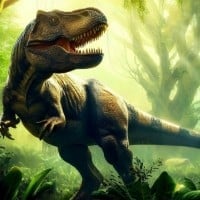 Tyrannosaurus, meaning "tyrant lizard", from the Ancient Greek tyrannos, "tyrant", and sauros, "lizard" is a genus of coelurosaurian theropod dinosaur. It also had a tremendous bite force, the strongest of any Dinosaur and living terrestrial animal. Its bite force reached up to 12,800 pounds (roughly... read more
Tyrannosaurus, meaning "tyrant lizard", from the Ancient Greek tyrannos, "tyrant", and sauros, "lizard" is a genus of coelurosaurian theropod dinosaur. It also had a tremendous bite force, the strongest of any Dinosaur and living terrestrial animal. Its bite force reached up to 12,800 pounds (roughly... read more " Ah, yes. The'tyrant lizard'. The Tyrannosaurus rex. Favorite of early century fiction writers and adolescent children everywhere. And why? Because it represents everything we fear about the past. It's what we believe that we've conquered, even though it ceased to exist before humanity had reached the proto-ape stage. And that was true. Until now. Until you. ”
- Dr. Ian Malcolm
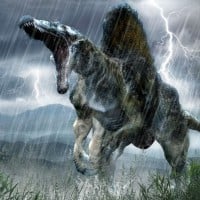 Spinosaurus is a genus of theropod dinosaur that lived in what now is North Africa, during the lower Albian to lower Cenomanian stages of the Cretaceous period, about 112 to 97 million years ago.
Spinosaurus is a genus of theropod dinosaur that lived in what now is North Africa, during the lower Albian to lower Cenomanian stages of the Cretaceous period, about 112 to 97 million years ago. Spinosaurus is faster, larger and smarter than Tyrannosaurus.
Spinsaurus could swim in the water and had longs arms to grab and balance with. It is a predator not a scavenger like tyrannosaurus. Tyrannosaurus wasn't at the top of the food chain. He never was. It was Spinosaurus.
Spinosaurus grew 50-60ft long and had a bite force of 3 tons with 7ft long steel crushing arms. It is the should be "King of dinosaurs" No debate.
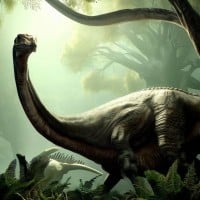 Brachiosaurus is a genus of sauropod dinosaur that lived in North America during the Late Jurassic, about 154–153 million years ago.
Brachiosaurus is a genus of sauropod dinosaur that lived in North America during the Late Jurassic, about 154–153 million years ago. " Oh, a Brachiosaurus. Wonderful. Our guests enjoy the large dinosaurs. ”
- Cabot Finch
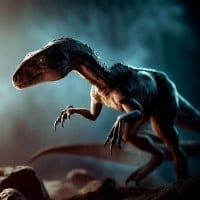 Velociraptor is a genus of dromaeosaurid theropod dinosaur that lived approximately 75 to 71 million years ago during the later part of the Cretaceous Period.
Velociraptor is a genus of dromaeosaurid theropod dinosaur that lived approximately 75 to 71 million years ago during the later part of the Cretaceous Period. " Look, raptors get a bad rap because people don't understand that they are, and will always be, alpha predators. Our job is to help them... the raptors... understand that we are as well. ”
- Owen Grady
Very fictional. These scientifically aren’t even close to this. Without said they are really cool and awesome
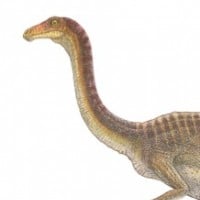
Underrated, like seriously, all they did was run and get eaten by a T. rex in Jurassic park
"Mmm, a Gallimimus. Dr. Grant was obsessed with your latest creation. He believed this dino was one of the closest genetic relatives to the modern avian species. ”
- Dr. Ian Malcolm
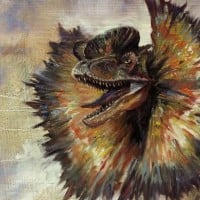 Dilophosaurus is a genus of theropod dinosaur. It contains a single known species, Dilophosaurus wetherilli, known from fossil remains found in the Kayenta formation of Arizona.
Dilophosaurus is a genus of theropod dinosaur. It contains a single known species, Dilophosaurus wetherilli, known from fossil remains found in the Kayenta formation of Arizona. "This dinosaur, the Dilophosaurus, lacks front-facing binocular eyes, a trait common to almost every predator. So instead, it hunted by scent. And now, many predators rely on that sense as well. ”
- Cabot Finch
Overrated but still awesome. Scientifically inaccurate but still awesome with the venom
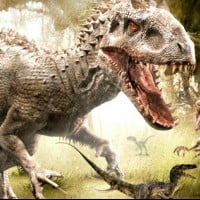 Indominus rex was the latest attraction in Jurassic World. The hybrid was created by combining the genetic traits of multiple species.
Indominus rex was the latest attraction in Jurassic World. The hybrid was created by combining the genetic traits of multiple species. With the second highest rating in game of 273 (indo raptor is 281) this animal however has the worst comfort threshold of 90%. also it's the only dinosaur to kill sauropods. it has 116 attack and 34 defense having the highest normal attack damage. you do not even have to go to dig sites to get this thing to 100% in fact all you need is 100% t rex and 100% velociraptor and to be at isla pena. BOOM YOU HAVE A INDOM
"Okay, I'm not quite sure what you're doing here... other than playing with fire. An Indominus rex? You are creating a hybrid. A dangerous hybrid. You are not only creating life, you're condemning it. Hopefully not your own. ”
- Dr. Ian Malcolm
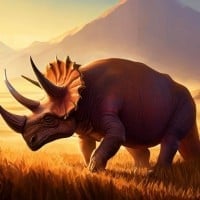 Triceratops is a genus of herbivorous ceratopsid dinosaur that first appeared during the late Maastrichtian stage of the late Cretaceous period, about 68 million years ago in what is now North America.
Triceratops is a genus of herbivorous ceratopsid dinosaur that first appeared during the late Maastrichtian stage of the late Cretaceous period, about 68 million years ago in what is now North America. " I see you've hatched a Triceratops. It might be cute now, but that's only going to last for about a week. ”
- Owen Grady
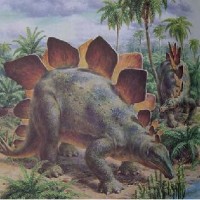 Stegosaurus is a type of armored dinosaur. Their fossil bones have been found in rocks dated to the Late Jurassic period, between 155 and 150 million years ago, in the western United States and Portugal.
Stegosaurus is a type of armored dinosaur. Their fossil bones have been found in rocks dated to the Late Jurassic period, between 155 and 150 million years ago, in the western United States and Portugal. " When I was a kid, I think the Stegosaurus was my favorite dinosaur. Maybe because it could take whatever came its way. Not a fighter... a survivor. ”
- Cabot Finch
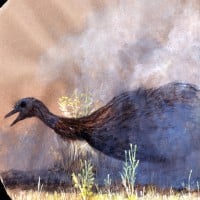 A genus of ornithomimid dinosaur that lived during the Late Cretaceous period, Struthiomimus resembled a large ostrich and is believed to have been omnivorous. It had long legs adapted for running and a beak-like mouth but lacked teeth. Fossil evidence suggests it inhabited what is now North America... read more
A genus of ornithomimid dinosaur that lived during the Late Cretaceous period, Struthiomimus resembled a large ostrich and is believed to have been omnivorous. It had long legs adapted for running and a beak-like mouth but lacked teeth. Fossil evidence suggests it inhabited what is now North America... read more "A Struthiomimus... interesting. Another dinosaur that furthers the case of a direct lineage to our modern birds. ”
- Dr. Kajal Dua
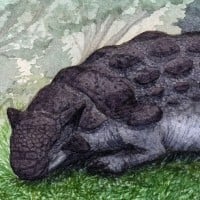 Ankylosaurus is a genus of armored dinosaur. Fossils of Ankylosaurus have been found in geological formations dating to the very end of the Cretaceous Period, between about 68–66 million years ago, in western North America, making it among the last of the non-avian dinosaurs.
Ankylosaurus is a genus of armored dinosaur. Fossils of Ankylosaurus have been found in geological formations dating to the very end of the Cretaceous Period, between about 68–66 million years ago, in western North America, making it among the last of the non-avian dinosaurs.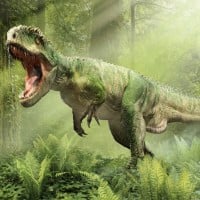 Giganotosaurus is a genus of theropod dinosaur that lived in what is now Argentina, during the early Cenomanian age of the Late Cretaceous period, approximately 99.6 to 97 million years ago.
Giganotosaurus is a genus of theropod dinosaur that lived in what is now Argentina, during the early Cenomanian age of the Late Cretaceous period, approximately 99.6 to 97 million years ago.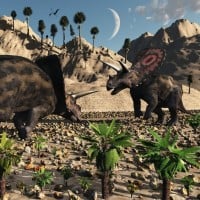 Torosaurus is a genus of herbivorous ceratopsid dinosaur that lived during the late Maastrichtian stage of the Cretaceous period, between 68 and 66 million years ago.
Torosaurus is a genus of herbivorous ceratopsid dinosaur that lived during the late Maastrichtian stage of the Cretaceous period, between 68 and 66 million years ago.
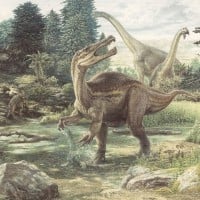 Baryonyx is a genus of theropod dinosaur which lived in the Barremian stage of the early Cretaceous Period, about 130–125 million years ago.
Baryonyx is a genus of theropod dinosaur which lived in the Barremian stage of the early Cretaceous Period, about 130–125 million years ago.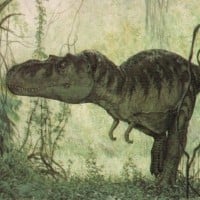 Albertosaurus is a genus of tyrannosaurid theropod dinosaurs that lived in western North America during the Late Cretaceous Period, about 70 million years ago.
Albertosaurus is a genus of tyrannosaurid theropod dinosaurs that lived in western North America during the Late Cretaceous Period, about 70 million years ago.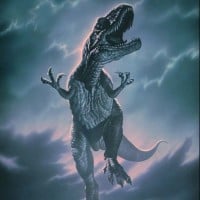 Allosaurus is a genus of large theropod dinosaur that lived 155 to 150 million years ago during the late Jurassic period.
Allosaurus is a genus of large theropod dinosaur that lived 155 to 150 million years ago during the late Jurassic period.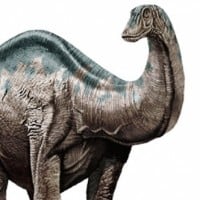
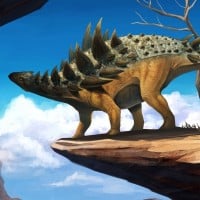 A dinosaur from the Early Cretaceous period, Polacanthus was an armored herbivore with a series of spikes and plates for defense. Its remains have been discovered mainly in England. The name Polacanthus means "many spines," reflecting its spiky appearance.
A dinosaur from the Early Cretaceous period, Polacanthus was an armored herbivore with a series of spikes and plates for defense. Its remains have been discovered mainly in England. The name Polacanthus means "many spines," reflecting its spiky appearance.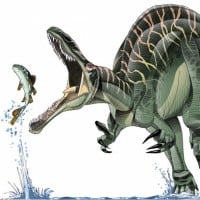 Suchomimus is a genus of large theropod dinosaur with a crocodile-like skull that lived between 125–112 million years ago, during the Aptian to early Albian stage of the Cretaceous period in Niger, Africa.
Suchomimus is a genus of large theropod dinosaur with a crocodile-like skull that lived between 125–112 million years ago, during the Aptian to early Albian stage of the Cretaceous period in Niger, Africa.
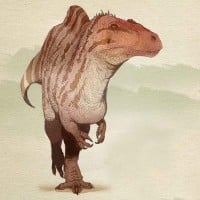 Acrocanthosaurus is a genus of theropod dinosaur that existed in what is now North America during the Aptian and early Albian stages of the Early Cretaceous.
Acrocanthosaurus is a genus of theropod dinosaur that existed in what is now North America during the Aptian and early Albian stages of the Early Cretaceous.
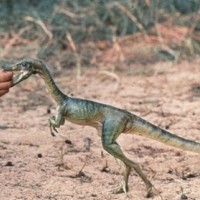 Compsognathus is a genus of small, bipedal, carnivorous theropod dinosaur. Members of its single species Compsognathus longipes could grow to around the size of a turkey.
Compsognathus is a genus of small, bipedal, carnivorous theropod dinosaur. Members of its single species Compsognathus longipes could grow to around the size of a turkey.